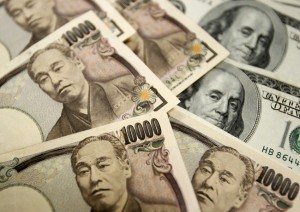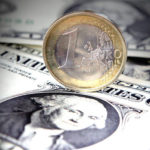 The yen advanced against the US dollar on Monday, although the Japanese Ministry of Finance announced a record deficit in the nations current account in December, as Fridays lower-than-expected number of added jobs in the US, continued to pressure dollars demand.
The yen advanced against the US dollar on Monday, although the Japanese Ministry of Finance announced a record deficit in the nations current account in December, as Fridays lower-than-expected number of added jobs in the US, continued to pressure dollars demand.
USD/JPY hit a session low at 102.07 at 08:10 GMT, after which consolidation followed at 102.18, losing 0.15% for the day. Support was likely to be received at February 7th low, 101.45, while resistance was to be encountered at February 7th high, 102.58.
The US dollar came under heavy selling pressure on Friday, after a report by the US Department of Labor revealed the non-farm payrolls in the country increased by 113 000 in January, well below experts’ forecasts of an increase to 180 000 and after US employers added 75 000 jobs a month ago, the smallest change since January 2011. Data showed that the small number of added jobs in January was driven by retailers and government agencies as they have cut payrolls at the fastest pace in more than a year, while at the same time construction companies and manufacturers boosted employment.
A separate report revealed the US unemployment fell to 6.6% in January, while analysts projected the jobless rate will remain steady at December’s rate of 6.7%. The data made it clear that the unemployment rate reached the weakest level since October 2008, even though more Americans entered the workforce.
The lower-than-expected number of non-farm payrolls in the previous month raised concerns over the uneven recovery of the US economy and fueled speculations that Fed may slow the pace of scaling back stimulus.
Meanwhile, a report by the Japanese Ministry of Finance today showed that the nations current account deficit widened to a record 639 billion yen in December. Decembers reading trimmed last year surplus to nearly 3.3 trillion yen, the smallest since 1985, when records were initially started. Usually, Japan is less reliant on foreign capital, mainly due to its surplus since 1985, which also boosts yens appeal as a haven asset.
There are growing concerns that BoJ will have to increase the scale of its asset-purchasing program this year, which weighs on yens demand. Bank of Japan has been purchasing more than 7 trillion JPY (68.4 billion USD) of government bonds each month in its struggle to achieve 2% inflation in two years since April 2013.
Japans quantitative easing program fails to keep up with the pace of the Federal Reserve monthly asset purchases as data revealed that Japans money supply more than doubled since 2008, while at the same time the Fed more than quadrupled the US monetary base.
According to Toru Suehiro, a market economist in Tokyo at Mizuho Securities Co., cited by Bloomberg: “If the BOJ wants to achieve its inflation target, it needs to weaken the yen further; that will require a step up in stimulus. Compared with the U.S., the pace of growth of the monetary base isn’t that high.”
The yen devalued 18% against the US dollar last year, the most since 1979, but in January the currency rebounded 3.2% as a slump in emerging markets, fueled demand for haven assets, such as the yen.
A Bloomberg News survey of 35 economists, showed an unanimous forecast that the BoJ will expand its monthly bond purchases program worth 7 trillion yen, with only two of the respondents predicting the central bank will achieve its inflation goal by the target period, April 2015.
Elsewhere, AUD/USD touched a session low at 0.8920 at 7:36 GMT, after which consolidation followed at 0.8928, losing 0.35% for the day. On Friday the pair reached highs unseen since January 14th at 0.8999, while recording the largest weekly advance since the week ended on September 6th, or 2.37%. Support was likely to be found at February 5th low, 0.8874, while resistance was to be encountered at February 7th high, 0.8999.





